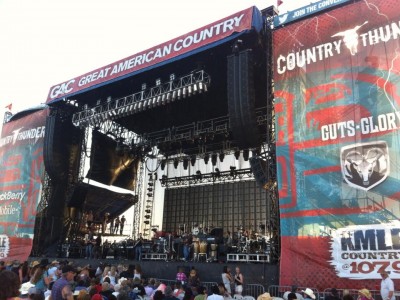Sponsorship Guide
Sponsorship development and on-site sponsorship activation are two essential elements for many events and festivals, for without sponsorship revenue, many events and festivals wouldn’t be able to offer all of the artists, lower ticket price levels, and other amenities they can afford with the help of sponsors.
Please note: events and festivals should never rely on sponsorship income to cover their expenses. This is a very risky strategy that has backfired for many a producer and leaves them in debt with vendors needing to be paid. Always be sure to have enough money to cover your expenses and then use any sponsorship income that comes in to enhance the experience at your festival.
- Determining what sort of sponsorship your event needs
- As stated above, you need to be able to pay for your own event without the need of any sponsorship money. Events that assume or expect to have a certain amount of income from yet-to-be-had sponsorship revenue are taking a major risk.
- Work to create the various sponsorship levels:
- Decide what amenities each level receives – base this on the amount you’re asking and the perceived value of what you can provide them, with enough of a buffer to make it worthwhile for you to sell it
- Many events will break down their sponsorship levels using names like Platinum, Gold, Silver, Bronze, or by what the sponsorship brings them – Title Sponsor, Stage Sponsor, Friend of the Festival
- Create a Sponsorship Deck
- Work with your Creative Department and ensure it’s in line with the theme of the event as well as other marketing materials
- Example of an online sponsorship deck – Sponseasy puts together sponsorship decks for events and festivals.
- Example of a hard copy of a Festival Sponsorship Deck – Atlanta Jazz Festival – download PDF here

- Second Example of a hard copy of a Festival Sponsorship Deck – Red Fest – download PDF here

- Sell, sell, sell
- Utilize established interpersonal business relationships
- Push out via the website, ads, social media
- For first year events, keep in mind that it’s a lot more difficult for sponsors to attach themselves to unproven events; get through the first year and every subsequent year should be easier
- Offer discounts for multi-year deals (but have out-clauses in case your event doesn’t make it that long)
- Run of show
- The Sponsorship Manager need to take care of all sponsors onsite:
- VIP Treatment during the show – be sure to schmooze and help them have a great time
- Sponsorship Activations
- Sponsorship Banners / Signage on-site
 At Country Thunder, a certain level of sponsorship allows for your name on the main stage scrims.
At Country Thunder, a certain level of sponsorship allows for your name on the main stage scrims.- May need to form a separate team here to oversee the build / execution / strike of these activations; they would work in conjunction with the site team to ensure all infrastructure (tents, tables, power, etc) are in place
- The Sponsorship Manager need to take care of all sponsors onsite:
- Post Event
- Follow up quickly, especially if they really enjoyed themselves, to talk about locking in a deal for next year or expanding on the deal they have
- Present a post-event review to them that includes attendance, market reach, demographics, and how your event can give them even better exposure next year


